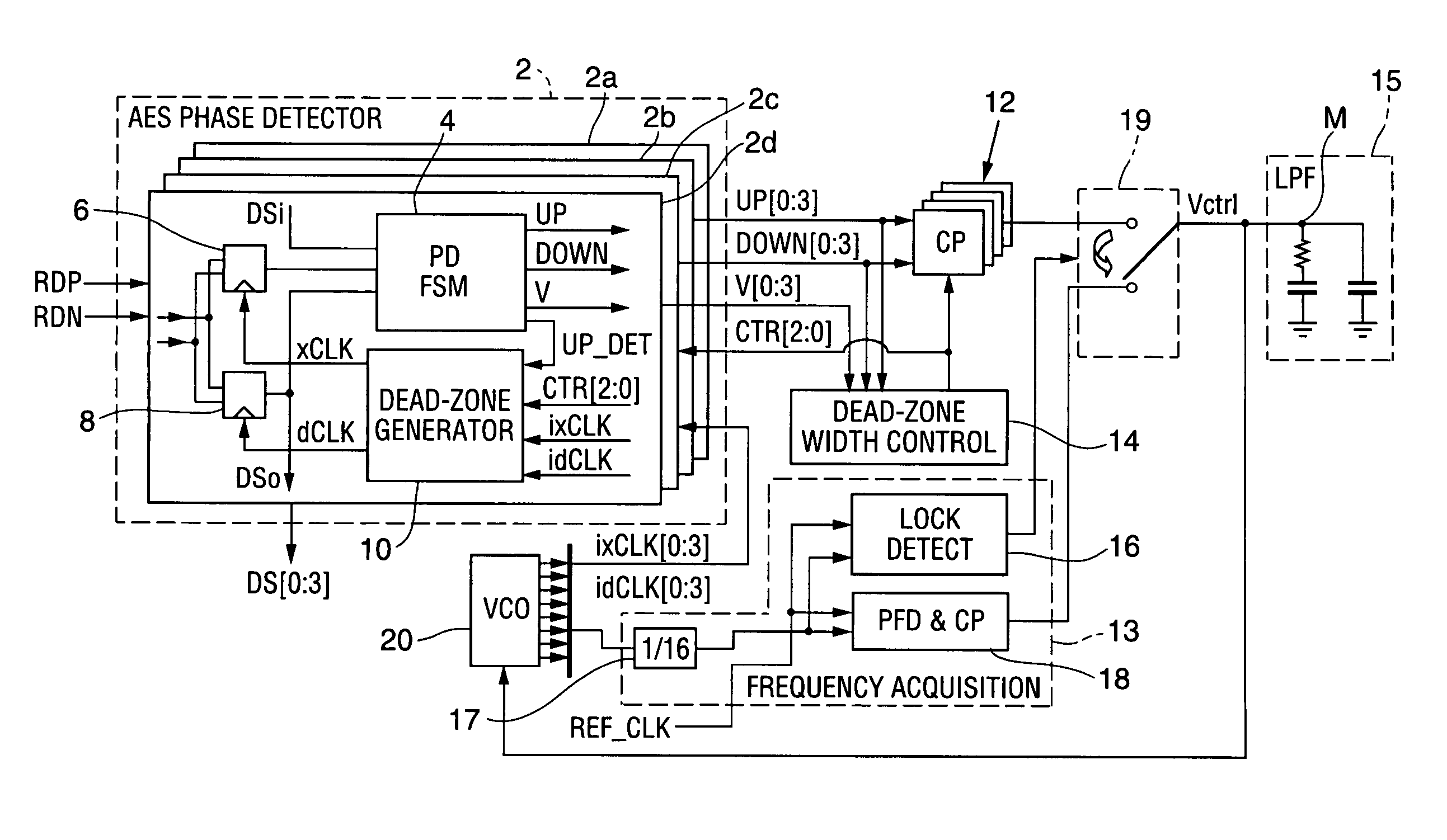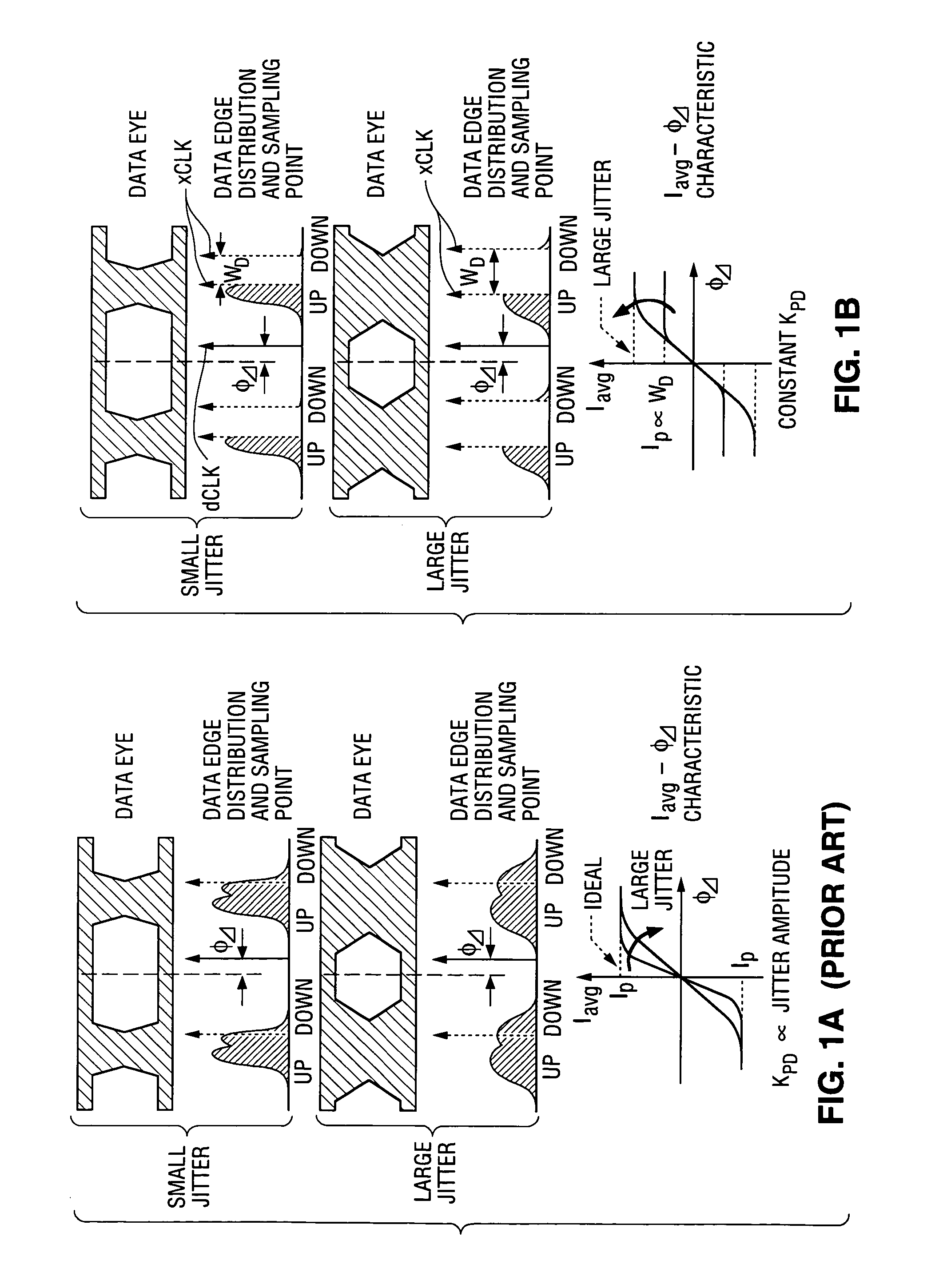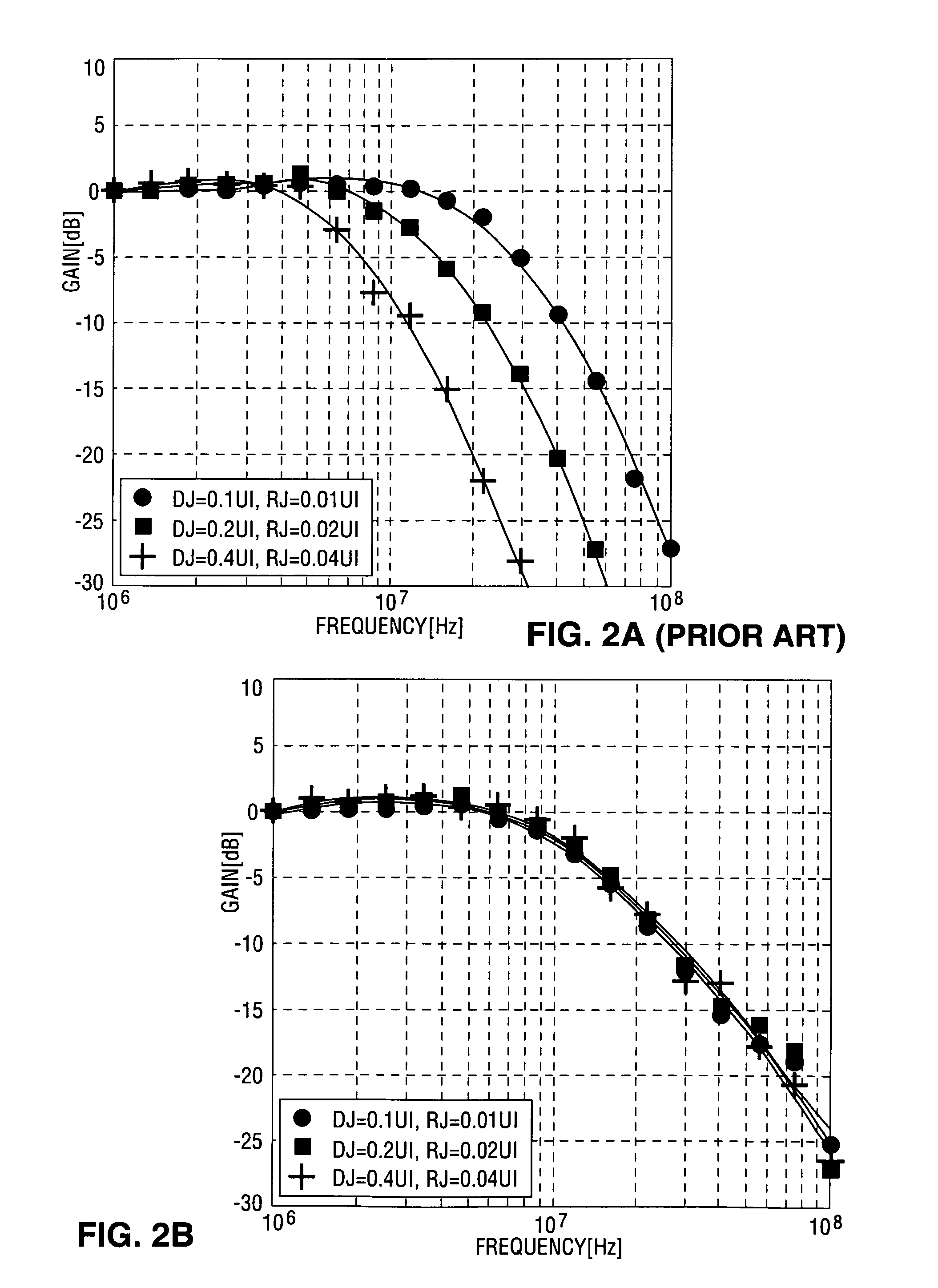Data sampling method and apparatus with alternating edge sampling phase detection for loop characteristic stabilization
- Summary
- Abstract
- Description
- Claims
- Application Information
AI Technical Summary
Benefits of technology
Problems solved by technology
Method used
Image
Examples
Embodiment Construction
[0047]We sometimes refer to a circuit herein as a PD (e.g., an “alternating edge sampling PD”) when it includes not only a circuit that determines the phase error (φΔ) present between a sampling clock and data (being sampled by the clock), but also additional circuitry (e.g., data sampling circuitry). For example, alternating edge sampling phase detector (“AES PD”) 2 of FIG. 3(a) includes data sampling circuitry (e.g., circuit 8) as well as circuitry for generating signals (“up[0:3]” and “down[0:3]”) indicative of whether the data sampling clock employed by the data sampling circuitry leads or lags the data being sampled.
[0048]In a class of embodiments, the invention is a clock and data recovery device (CDR) that includes a binary phase detector (binary PD), employs a 2× oversampling technique, and is not subject to unstable gain (KPD) due to jitter variation. The inventive CDR includes a data loop configured to generate sampling clocks in response to a charge pump current IP having...
PUM
 Login to View More
Login to View More Abstract
Description
Claims
Application Information
 Login to View More
Login to View More - R&D
- Intellectual Property
- Life Sciences
- Materials
- Tech Scout
- Unparalleled Data Quality
- Higher Quality Content
- 60% Fewer Hallucinations
Browse by: Latest US Patents, China's latest patents, Technical Efficacy Thesaurus, Application Domain, Technology Topic, Popular Technical Reports.
© 2025 PatSnap. All rights reserved.Legal|Privacy policy|Modern Slavery Act Transparency Statement|Sitemap|About US| Contact US: help@patsnap.com



